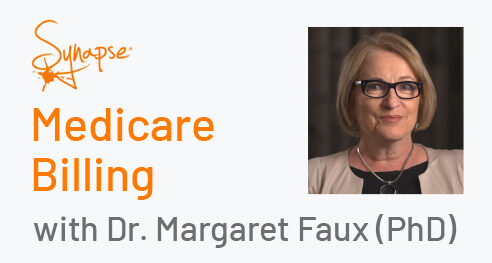In this post Margaret explains how we identify alarming Medicare use.
We analyse healthcare data often, applying global standardised criteria to identify continual discrepancies in what is being billed versus what we would expect to be billed. These criteria factor in the complexity of healthcare where there can often be clinical reasons for discrepancies.
Mostly, we are not concerned with one-off, odd-looking billing. We instead look for patterns of troubling billing behaviour that need further investigation.
This is an internationally recognised methodology (which our own Medicare watchdog uses) – the Professional Services Review Agency. Aggregated billing records are always the starting point because they tell the investigators what to look more closely.
And while the robust auditing formulas are quite technical and require a bespoke skill-set, patients may be surprised by how much misbilling they can quite easily spot themselves. For example, have you ever looked at your Medicare statement? Here is five things you can easily see. NB: if you see the letter H after a code it just means you were in hospital on that date.
- If you see code 132 on one date then code 133 on the very next date by the same doctor, it is highly unlikely the 133 complied with Medicare requirements.
- Sometimes your war wounds are the source of truth. If you had a spinal fusion and you see code 51120 on your Medicare statement – you most likely have two scars – one where you had your fusion and another somewhere else (often on your hip). Do you?
- Now, have a look at your pre-anaesthetic consultations. This is when the introductory consultation you have with your anaesthetist before your surgery. If the conversation lasted up to 15 minutes, not more, you should see code 17610. If you see 17615, 17620 or 17625, and the consultation was 15 minutes or less, the claim is unlikely to be appropriate.
- On the day of your procedure, if you were generally healthy and able to go about your life without significant limitation, you should not see item 25000 or 25005 that was billed by your anaesthetist.
- If you were on the phone with your General Practitioner for less than 6 minutes you should not see code 91891 ‘Phone attendance by a general practitioner lasting at least 6 minutes’. It’s easy to verify, you can just check the call duration on your phone.
Unfortunately, data showing the prevalence of misbilling does not lie, and this should be brought out into the light. The medical practitioners who are doing the right thing know this and want to see misbilling stopped. That is why we are calling for a medical records review which will validate our initial findings and concerns.
Dr Margaret Faux (PhD) – Founder & Chief Executive Officer
Synapse Medical Services
To join the conversation, Follow on LinkedIn

